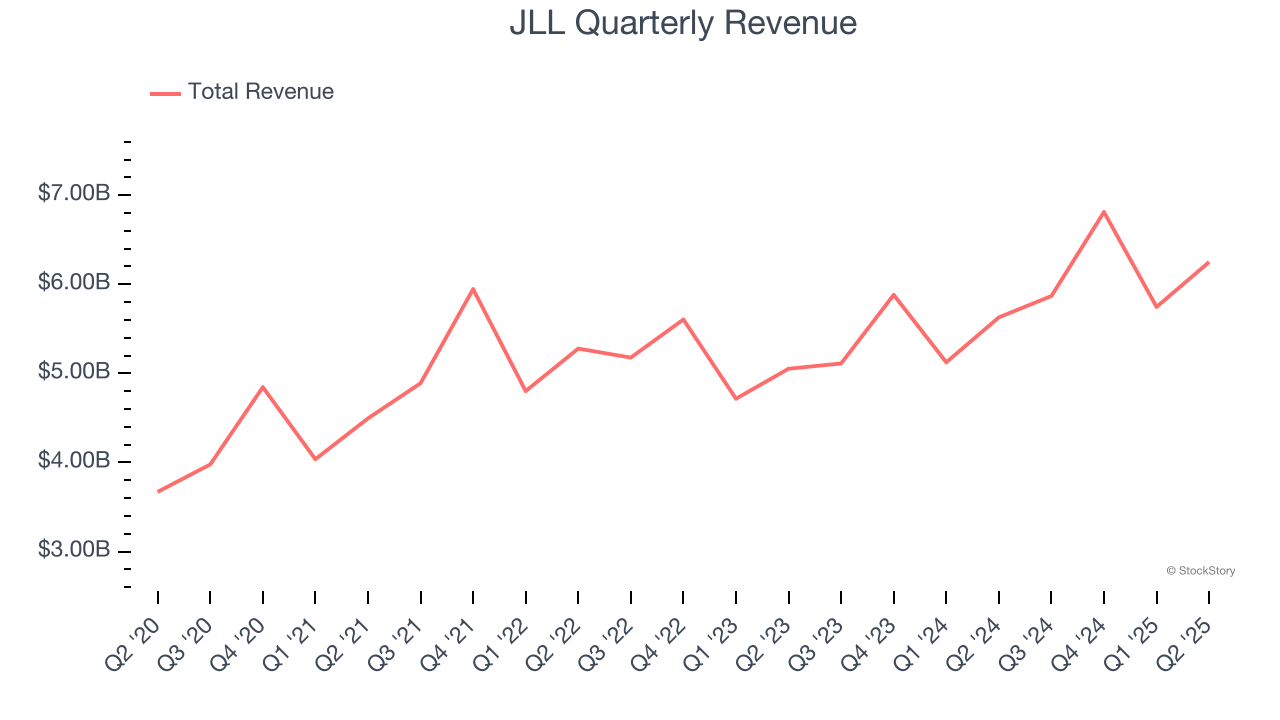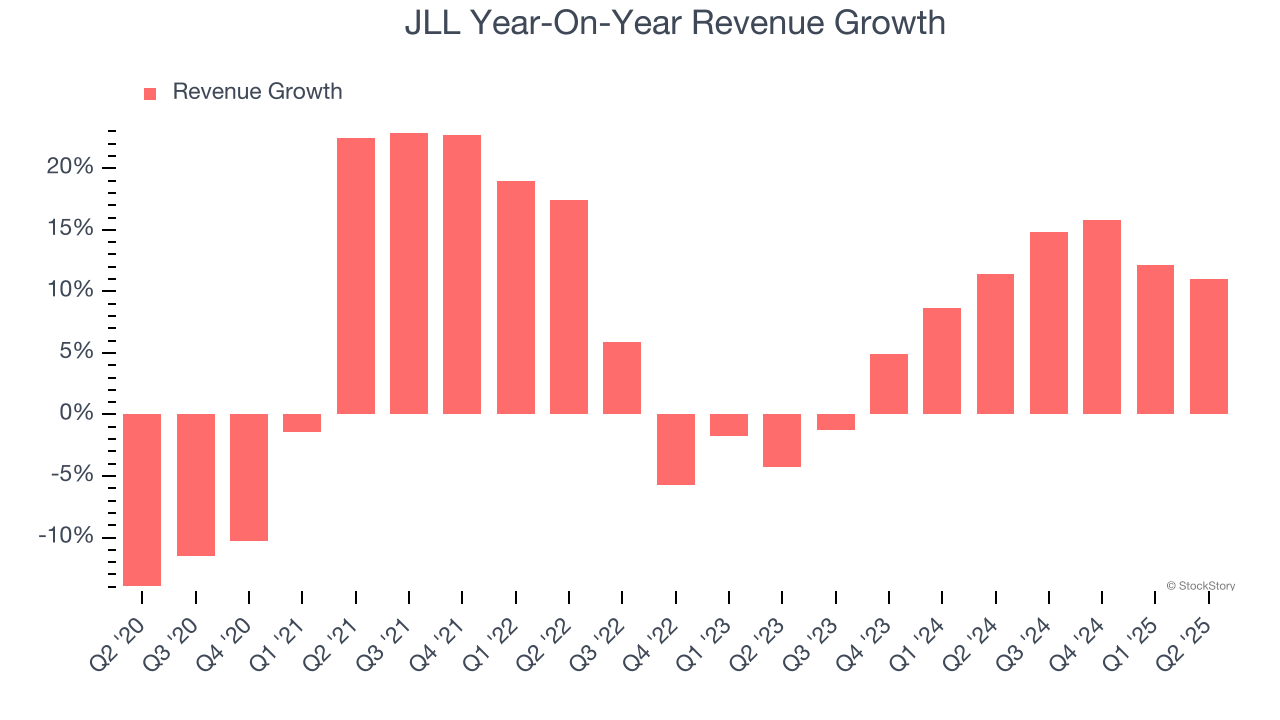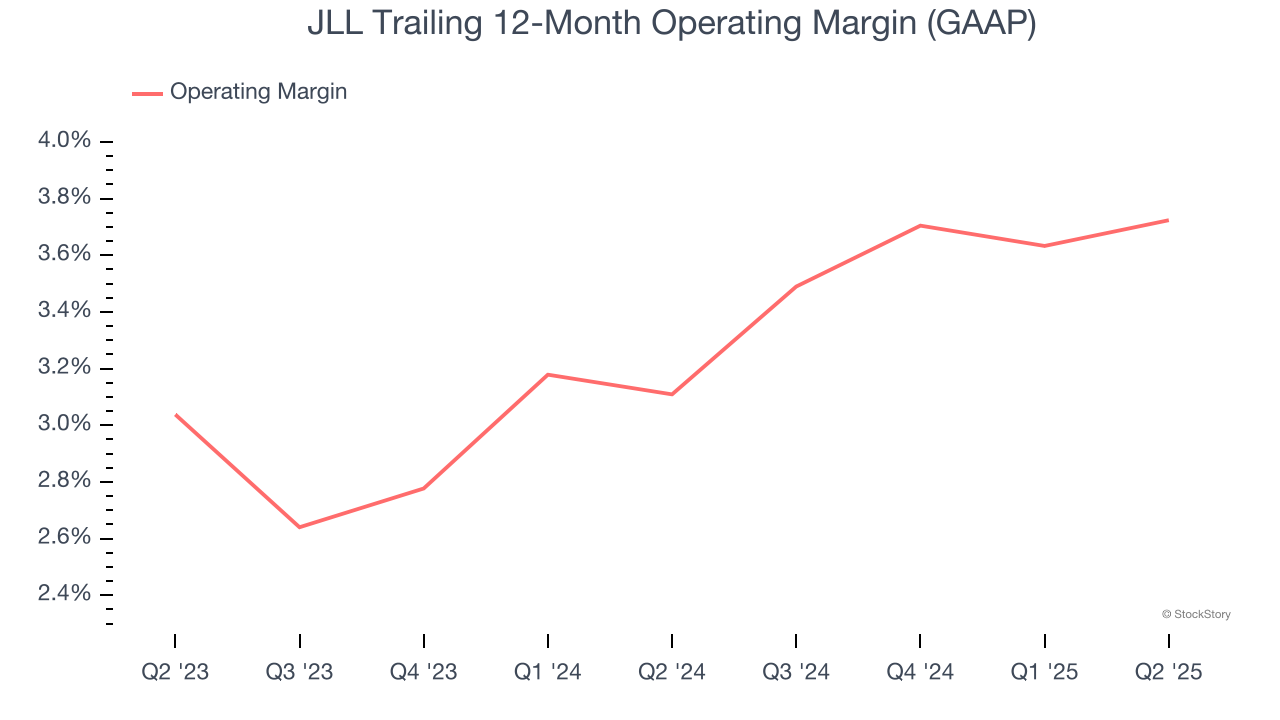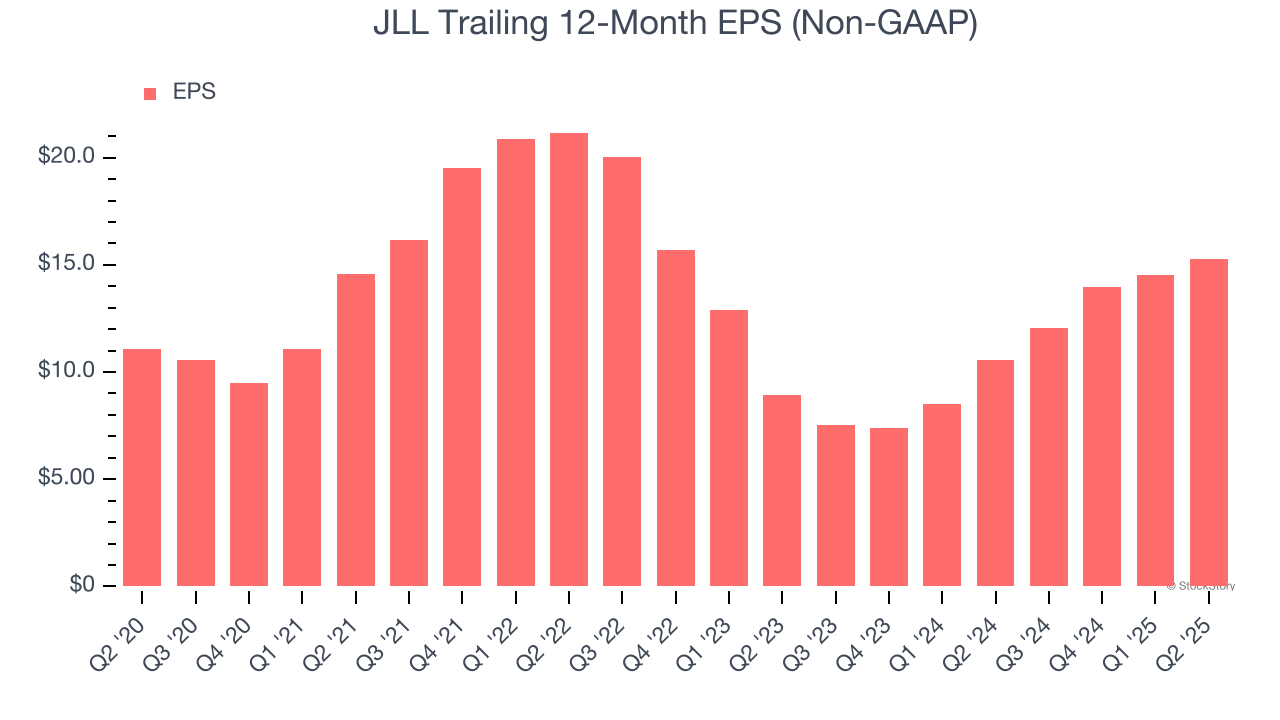
Real estate firm JLL (NYSE:JLL) fell short of the market’s revenue expectations in Q2 CY2025, but sales rose 11% year on year to $6.25 billion. Its non-GAAP profit of $3.30 per share was 3% above analysts’ consensus estimates.
Is now the time to buy JLL? Find out by accessing our full research report, it’s free.
JLL (JLL) Q2 CY2025 Highlights:
- Revenue: $6.25 billion vs analyst estimates of $6.30 billion (11% year-on-year growth, 0.8% miss)
- Adjusted EPS: $3.30 vs analyst estimates of $3.20 (3% beat)
- Adjusted EBITDA: $291.7 million vs analyst estimates of $281.3 million (4.7% margin, 3.7% beat)
- Operating Margin: 3.2%, in line with the same quarter last year
- Free Cash Flow Margin: 4.6%, similar to the same quarter last year
- Market Capitalization: $12.96 billion
Company Overview
Founded in 1999 through the merger of Jones Lang Wootton and LaSalle Partners, JLL (NYSE:JLL) is a company specializing in real estate advisory and investment management services.
Revenue Growth
Reviewing a company’s long-term sales performance reveals insights into its quality. Any business can put up a good quarter or two, but the best consistently grow over the long haul. Regrettably, JLL’s sales grew at a sluggish 6.9% compounded annual growth rate over the last five years. This fell short of our benchmark for the consumer discretionary sector and is a rough starting point for our analysis.

Long-term growth is the most important, but within consumer discretionary, product cycles are short and revenue can be hit-driven due to rapidly changing trends and consumer preferences. JLL’s annualized revenue growth of 9.6% over the last two years is above its five-year trend, but we were still disappointed by the results. 
This quarter, JLL’s revenue grew by 11% year on year to $6.25 billion but fell short of Wall Street’s estimates.
Looking ahead, sell-side analysts expect revenue to grow 10.5% over the next 12 months, similar to its two-year rate. This projection doesn't excite us and implies its newer products and services will not lead to better top-line performance yet.
Today’s young investors won’t have read the timeless lessons in Gorilla Game: Picking Winners In High Technology because it was written more than 20 years ago when Microsoft and Apple were first establishing their supremacy. But if we apply the same principles, then enterprise software stocks leveraging their own generative AI capabilities may well be the Gorillas of the future. So, in that spirit, we are excited to present our Special Free Report on a profitable, fast-growing enterprise software stock that is already riding the automation wave and looking to catch the generative AI next.
Operating Margin
Operating margin is a key measure of profitability. Think of it as net income - the bottom line - excluding the impact of taxes and interest on debt, which are less connected to business fundamentals.
JLL’s operating margin might fluctuated slightly over the last 12 months but has generally stayed the same, averaging 3.4% over the last two years. This profitability was lousy for a consumer discretionary business and caused by its suboptimal cost structure.

In Q2, JLL generated an operating margin profit margin of 3.2%, in line with the same quarter last year. This indicates the company’s overall cost structure has been relatively stable.
Earnings Per Share
Revenue trends explain a company’s historical growth, but the long-term change in earnings per share (EPS) points to the profitability of that growth – for example, a company could inflate its sales through excessive spending on advertising and promotions.
JLL’s unimpressive 6.6% annual EPS growth over the last five years aligns with its revenue performance. On the bright side, this tells us its incremental sales were profitable.

In Q2, JLL reported adjusted EPS at $3.30, up from $2.55 in the same quarter last year. This print beat analysts’ estimates by 3%. Over the next 12 months, Wall Street expects JLL’s full-year EPS of $15.26 to grow 16.6%.
Key Takeaways from JLL’s Q2 Results
It was encouraging to see JLL beat analysts’ EBITDA expectations this quarter. We were also happy its EPS outperformed Wall Street’s estimates. On the other hand, its revenue slightly missed. Zooming out, we think this was a mixed quarter. The stock remained flat at $272.30 immediately after reporting.
Should you buy the stock or not? We think that the latest quarter is only one piece of the longer-term business quality puzzle. Quality, when combined with valuation, can help determine if the stock is a buy. We cover that in our actionable full research report which you can read here, it’s free.
